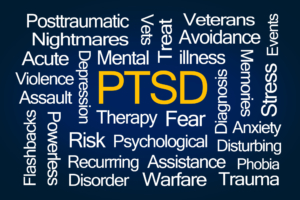Service-related PTSD Disability Claims have Tripled in the Last Decade

By Debbie Gregory.
More than 20 percent of veterans receiving federal disability are suffering from post-traumatic stress disorder, a figure that has tripled in the last decade, from approximately 345,000 cases in fiscal 2008 to more than 940,000 cases today.
This includes all age groups, not just veterans from the recent wars.
PTSD symptoms usually start soon after the traumatic event, but they may not occur until months or years later. They also may come and go over many years. If the symptoms last longer than 4 weeks, cause great distress, or interfere with work or home life, the individual probably has PTSD.
Some of the common symptoms of PTSD include:
- persistent memories of the event, nightmares, re-living the event over and over
- not talking to anyone about the event, avoiding any situation that may trigger your bad memories
- feeling numb and detached, depressed, disinterested in normal life activities, and
- feeling on high alert all the time, always watching for danger.
PTSD can happen to anyone. It is not a sign of weakness. A number of factors can increase the chance that someone will develop PTSD, many of which are not under that person’s control. Both the VA and Defense Department have worked in recent years to combat the stigma of seeking help for mental health issues.
PTSD is treatable. Many places within VA provide PTSD treatment. General programs that provide mental health services include VA medical centers, community-based outpatient clinics (CBOCs), and Vet Centers.
Vet Centers also offer services to families of Veterans for military-related issues. There are no fees or charges for Vet Center services, and services are confidential.
Military Connection salutes and proudly serves veterans and service members in the Army, Navy, Air Force, Marines, Coast Guard, Guard and Reserve, and their families.

















